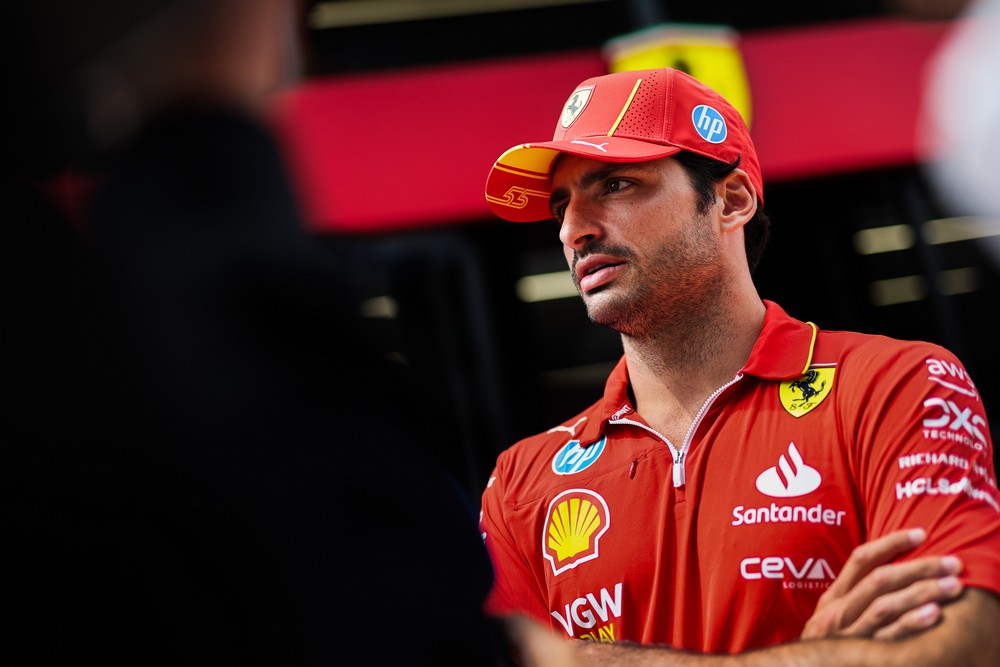
Perhaps the biggest free agent of the 2025 season, Carlos Sainz, started the summer break with a new contract in hand, signing with Williams for next season. The contract will see the Spaniard stick with Williams for the next two years. Sainz, who will be forced to step aside at Ferrari to make room for Lewis Hamilton at the end of the year, has been with Ferrari for four seasons. He had caught the attention of many teams, including Sauber and Alpine, making him the most important puzzle piece in the 2025 grid. But with some uncertainty still surrounding the top teams for 2026, F1 journalist Peter Windsor has stirred the pot, insisting Sainz’s contract foolishly does not include an exit clause that would allow him to rejoin Ferrari if a seat becomes available. Williams boss James Vowles has silenced the rumours, clarifying that only a limited number of people know the details of the contract, implying that Windsor is not one of them.
Red Bull’s Sporting Director Jonathan Wheatley is set to leave the team at the end of the year to become team principal in Audi’s inaugural season. He has been with Red Bull in various roles since 2006, having joined from Renault (originally Benetton). During his time on the team, he has contributed to a staggering six World Constructors’ Championship and seven World Drivers’ Championship titles. He will remain with the team for the rest of the season but will sit out 2025 as part of a gardening leave period before joining Audi for 2026. Although it’s unknown who will replace Wheatley in his current role, it’s believed that the move will trigger an internal management shuffle within the team.
McLaren has extended Andrea Stella’s contract, keeping him as team principal for at least the next couple of years. While the agreement’s duration is unknown, it has been described as a “multi-year” deal, which is in line with the team’s recent hiring practices. Stella inherited the role from Andreas Seidl, who left the team at the end of 2022 to become CEO of Sauber.
The FIA made changes to grid penalties, allowing for penalties to be applied to the main race if the driver retires from the sprint race. An example of this came at this year’s Chinese Grand Prix sprint race, in which Fernando Alonso collided with Carlos Sainz at turn nine. Although the two-time champion had earned a time penalty, he had already retired from the sprint race. The new regulations allow for grid penalties to be imposed for time, drive-through, and stop-and-go penalties that cannot be served during the sprint race due to “retirement from the sprint session”. This rule will take immediate effect after the summer break.
The FIA has tweaked a rule regarding qualifying stoppages to prevent the confusion experienced during the Chinese Grand Prix. At this year’s Chinese Grand Prix, Carlos Sainz spun during qualifying, bringing out the red flag. The Spaniard was able to get his car going again without assistance and continued in the rest of the session. Later, Aston Martin lodged a complaint claiming that Sainz violated Article 39.6 of the regulations, which stated that any driver who stops on the track during qualifying cannot participate in the rest of the session. Aston Martin’s protest was dismissed. The FIA has since amended the regulation, clarifying that the rule only applies to drivers who receive “physical assistance”.
The FIA has approved changes to the regulations allowing for teams to test with “mule cars” ahead of the huge upcoming changes for 2026. A mule car is a car that has been modified to mimic the upcoming regulation changes. The regulations will allow teams to participate in 10 days of testing during 2024 and 40 days in 2025 in a bid to help them prepare for 2026. Teams may use any of their cars between 2020 and 2023, although it may be a difficult decision since the newer cars are closer aerodynamically but the older cars are closer in size to the planned 2026 regulations. Teams cannot use this additional testing as a way to give rookie drivers more seat time, as any participating drivers must have competed in at least one Formula One race or completed at least 500km in a current car at racing speed.
It can be challenging for even the most avid fans to keep up with the fast-paced world of Formula One. The Weekly F1 Recap is a series published each Monday that breaks down the action, both on and off the circuit, into bit-sized pieces. It's perfect for casual and experienced fans alike.